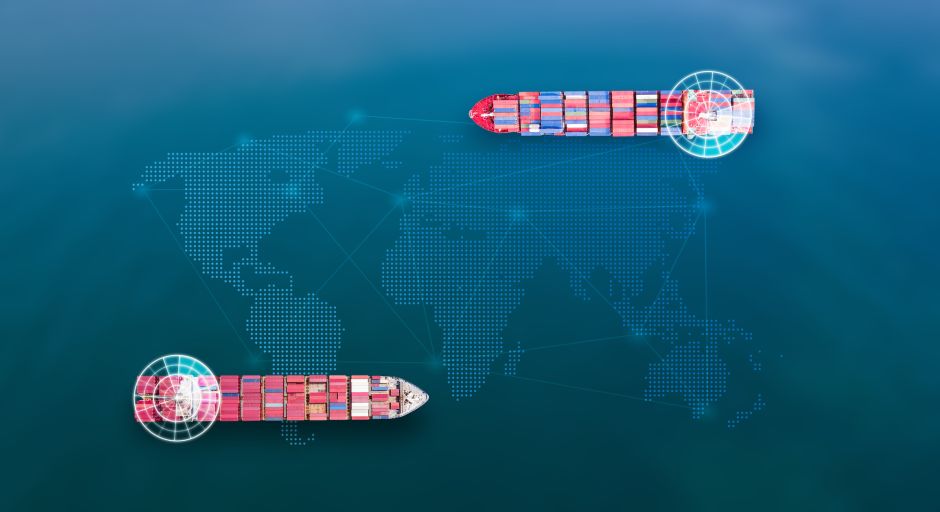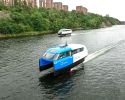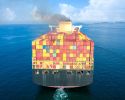Autonomous ships can’t handle heavy traffic

Is there really any point with autonomous ships? A new research report from Lighthouse and the Swedish Transport Administration raises the question. Getting artificial intelligence to understand current shipping regulations and act safely seems next to impossible.
The first research report on how AI-based decision support systems work together with the international maritime regulations to avoid collisions at sea COLREG was published last year. The results showed, among other things, that navigators were positively disposed to receiving suggestions and brainstorming ideas with a computer. This after 19 navigators got to know the system in a simulator study that included three traffic scenarios in a decision support system developed by Wärtsilä. But how would the system handle more difficult traffic scenarios? For example, what happens if ships meet and have different settings in their decision support systems? In other words – how well does it work in reality? That is what the second research report COLREG 2 - Potential consequences of varying algorithms in traffic situations took a closer look at. Simulation tests were done with autonomous ships driving the same traffic scenarios as manned ships did.
“There are many academic articles with perfect solutions on how COLREGs can be implemented in algorithms. The problem is that they cannot be verified. And how it works in reality is a completely different matter, and as far as I know, only Wärtsilä has developed a decision support system that you can actually drive a ship with. We have run simulations in their system called AIM as well as in a simpler system developed by SEAMADE”, says Reto Weber, technology lecturer at Chalmers, who led the project.
Although the tests were done with Wärtsilä's tools, Reto Weber believes that the results are largely universal.
“I have run traffic situations both between two or three ships based on different parameters and looked at what is happening and why. Have the developers got it right? Here there is a gap between them and the users. The developers do not necessarily have a maritime background, which is important to have when applying the rules in these systems”.
He continues:
“One purpose of this report is to provide feedback to others who are developing decision support systems.”
So how does artificial intelligence steer a ship safely? On the open sea, with little traffic, it's probably fine, but in coastal, dense traffic, it's not recommended.
“Commanders on ships have different preferences and different ways of solving situations, which can be compared to algorithms that have different settings. When we compared, it became clear that the human commanders act according to a pattern that nevertheless looks very orderly, while with the algorithms “spaghetti patterns”. I didn't expect them to be such messy results.”
But maybe it's not so strange. Including all the factors that affect human decision-making in traffic situations – experience, flexibility and seamanship – in artificial intelligence will require machine learning, more advanced neural networks and a huge amount of data, according to the report.
“I won't say it's impossible, but there is a long way to go before algorithms can replace human helmsmen and commanders.”
During the course of the work, Reto Weber also realized how well-written and elegant COLREGs are.
“I have enormous admiration for the lawyers who have written them. The COLREGs are very clear and concise but at the same time leave freedom for the operator to adapt to the prevailing circumstances. How should an algorithm be able to do that?”
The research report COLREG 2 - Potential consequences of varying algorithms in traffic situations has been done within the framework of the Swedish Transport Administration's industry program, which is run by Lighthouse and is written by Reto Weber, Chalmers, Luis Sanchez-Heres, RISE and Ted Sjöblom
-
 NextWave – en podd som ska locka unga
NextWave – en podd som ska locka unga -
 Ny studie: Eldrivna pendelbåtar kan effektivisera Stockholms kollektivtrafik
Ny studie: Eldrivna pendelbåtar kan effektivisera Stockholms kollektivtrafik -
 Sjöfartens utsläpp ökar
Sjöfartens utsläpp ökar -
 Sociala relationer påverkar val av bränsle
Sociala relationer påverkar val av bränsle -
 Sjöfartens omställning kräver ”mjukare” påtryckningar
Sjöfartens omställning kräver ”mjukare” påtryckningar -
 Hon hade avtalad tid med Kapten ynkrygg
Hon hade avtalad tid med Kapten ynkrygg -
 Lighthouse omvärldsanalys 2025 – osäkerhet och tullar präglar sjöfarten
Lighthouse omvärldsanalys 2025 – osäkerhet och tullar präglar sjöfarten -
 Se seminariet Shipping in the Marine Environment
Se seminariet Shipping in the Marine Environment -
 Vad betyder egentligen de 90 procenten?
Vad betyder egentligen de 90 procenten? -
 Hålla där...
Hålla där...

